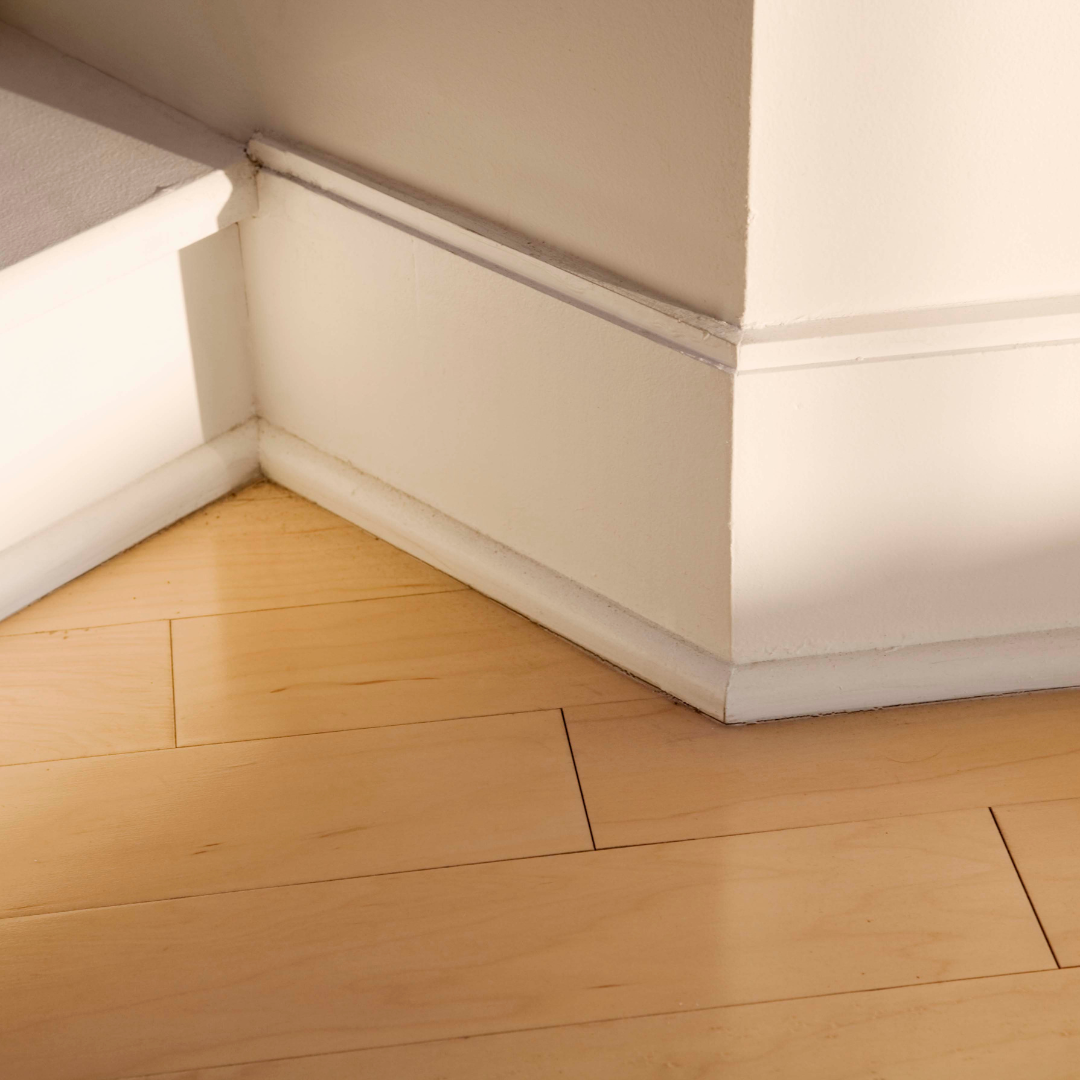Blog > How Baseboards Should Impact Your Flooring Choice
Baseboards and Flooring
Tuesday, July 2nd, 2024

Baseboards play a significant role in the overall look and function of your flooring and can affect your choice of flooring in several ways:
Aesthetic Compatibility
- Style and Design: The style of your baseboards should complement your flooring choice. For instance, traditional, ornate baseboards might look best with classic hardwood floors, while sleek, modern baseboards might suit contemporary tile or laminate.
- Color Matching: The color of your baseboards should harmonize with your flooring. White or neutral-colored baseboards are versatile and can match almost any flooring type, while stained wood baseboards might be best paired with similar wood floors.
Installation Considerations
- Height and Profile: The height and profile of the baseboards need to be considered. High baseboards can accommodate thicker flooring like hardwood or tile, whereas thinner baseboards might be better suited for vinyl or laminate flooring.
- Transition Needs: Different flooring types might require specific transitions where the floor meets the baseboard. For example, carpet may require tack strips and a different approach compared to hardwood or tile.
Flooring Expansion
- Allowance for Expansion: Some types of flooring, like hardwood and laminate, require an expansion gap around the perimeter to accommodate expansion and contraction. Baseboards can help cover this gap, so choosing a baseboard with an appropriate width is crucial.
Maintenance and Durability
- Material Compatibility: Consider the material of both the flooring and the baseboards. For instance, in high-moisture areas like bathrooms, tile floors paired with PVC or other moisture-resistant baseboards are more practical than wood baseboards.
- Durability: The baseboard material should be durable enough to withstand cleaning and the type of foot traffic your flooring will get. For instance, in high-traffic areas, more durable baseboards might be necessary to withstand the wear and tear.
Cost and Budget
- Cost Matching: High-end flooring typically pairs with high-quality baseboards to maintain an overall sense of quality. Budget-friendly flooring might be paired with simpler, less expensive baseboards.
Practical Examples:
- Hardwood Flooring: Often paired with wood or MDF baseboards. The baseboard should be high enough to cover the expansion gap and wide enough to match the scale of the room and flooring.
- Laminate Flooring: Similar to hardwood, laminate flooring benefits from baseboards that can cover expansion gaps. MDF baseboards are a common choice.
- Tile Flooring: Typically, tile flooring is paired with tile baseboards or water-resistant materials. The baseboard should be durable and easy to clean.
- Carpet: Baseboards should be high enough to accommodate the carpet and its padding. Often, baseboards are installed before the carpet, with a gap left for the carpet installer to tuck the edge of the carpet underneath.
By considering how baseboards interact with your flooring choice, you can ensure a cohesive, functional, and aesthetically pleasing result. Need help in deciding which flooring makes the most sense with your existing baseboard? Contact Jason’s Carpet and Tile today at 954-231-4487.
